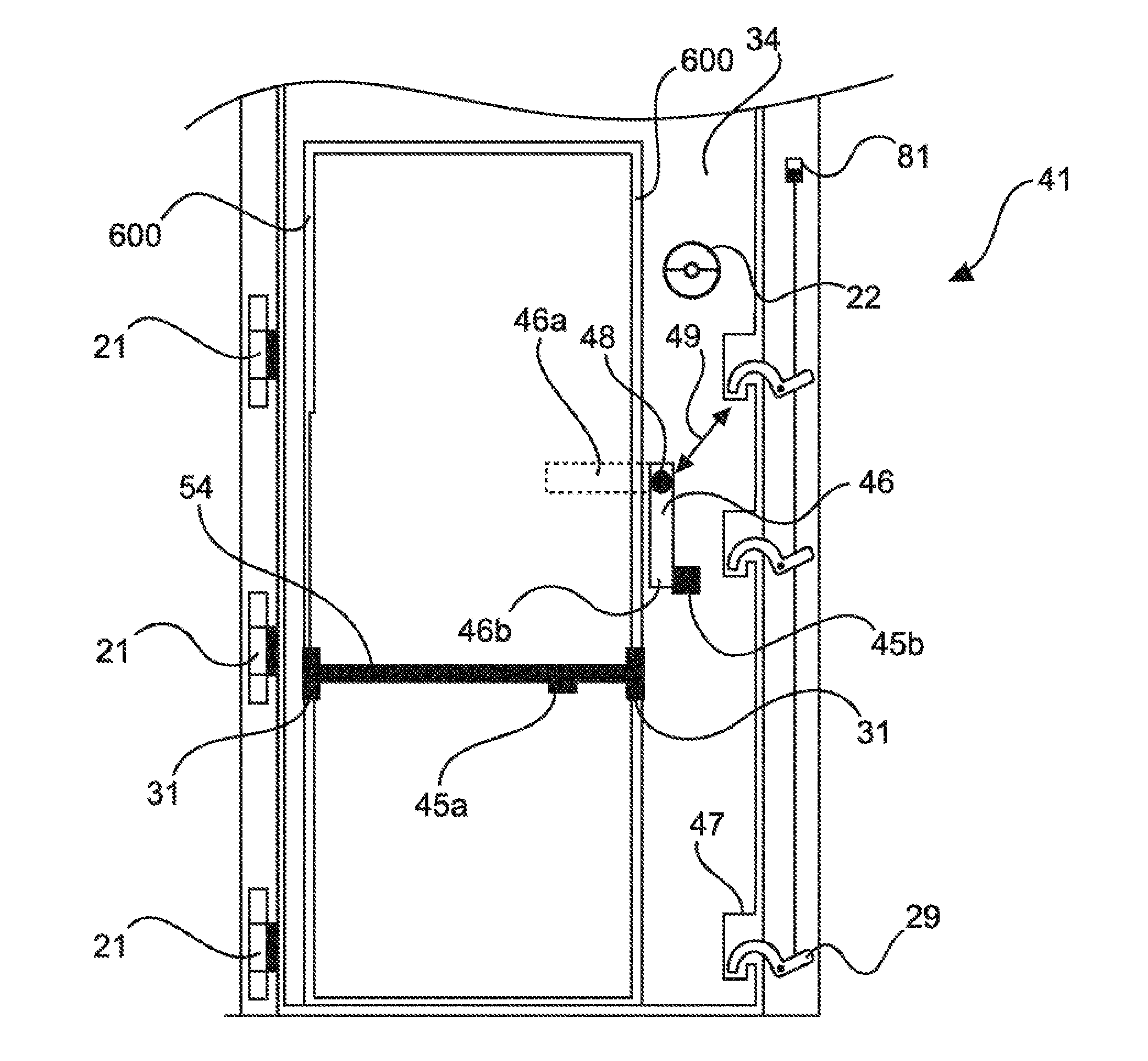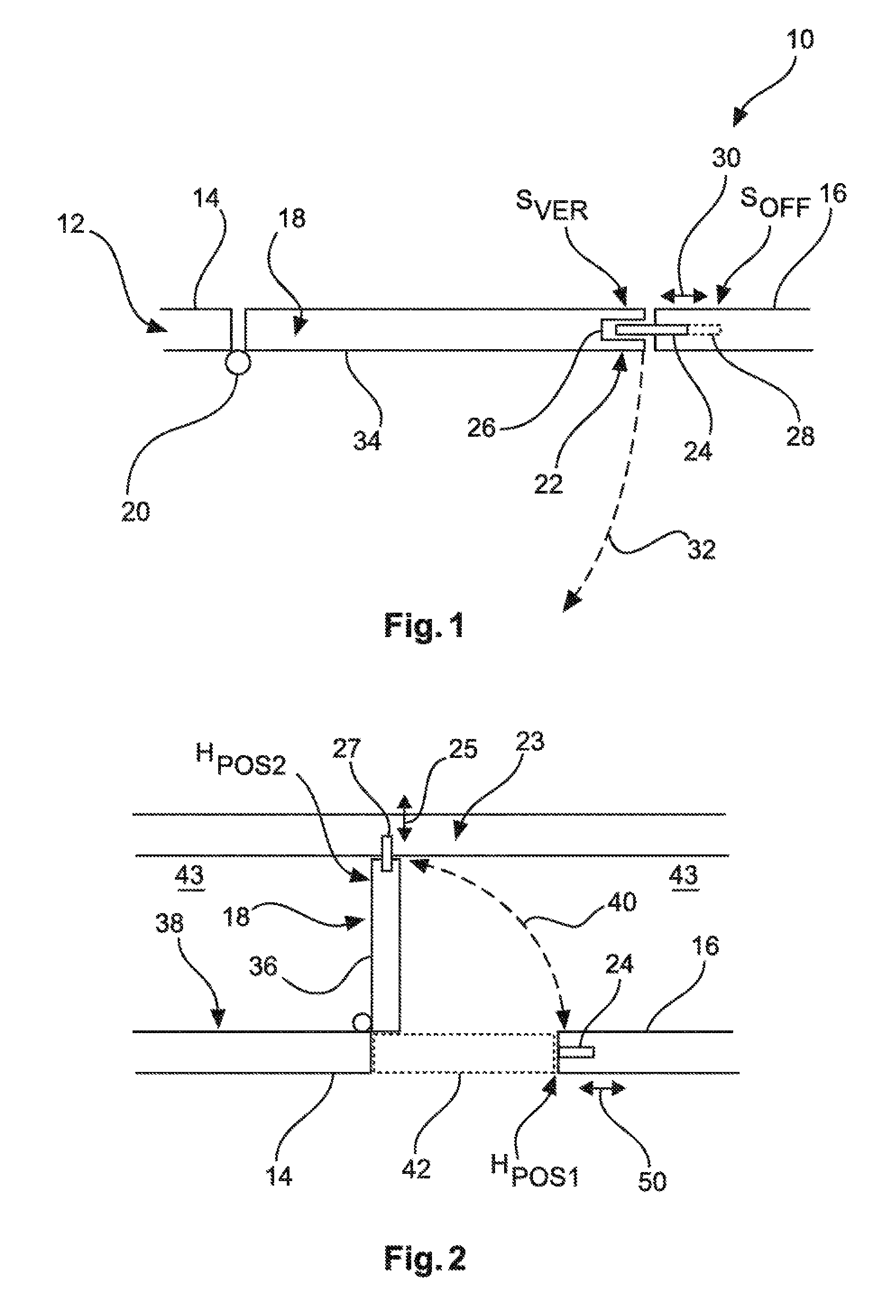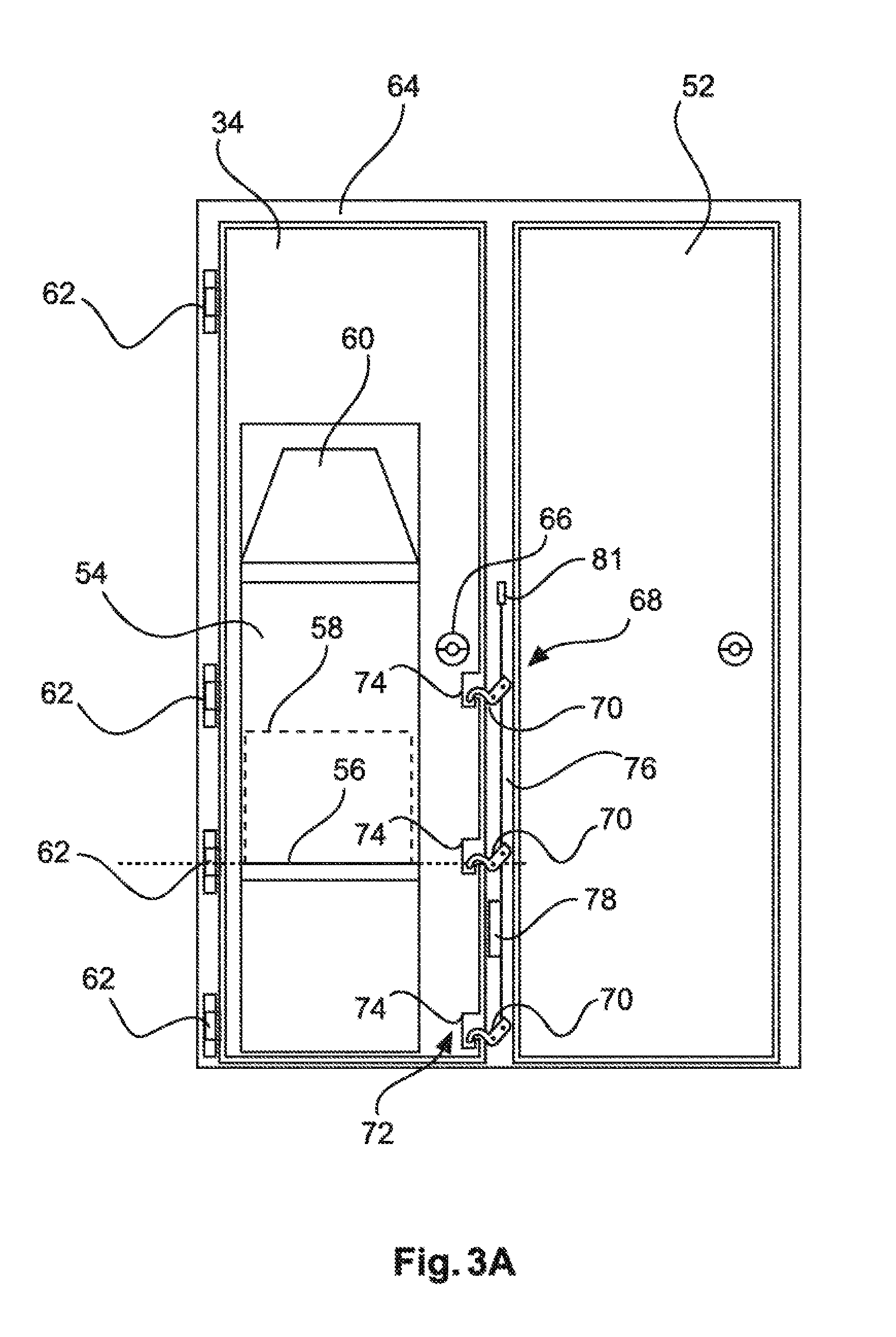Retaining system for a movable component
a technology of movable components and retaining systems, which is applied in the direction of seating arrangements, transportation and packaging, aircraft crew accommodation, etc., can solve the problems that the manual activation bolts for locking the bathroom door are often unable to transmit additional forces
- Summary
- Abstract
- Description
- Claims
- Application Information
AI Technical Summary
Benefits of technology
Problems solved by technology
Method used
Image
Examples
Embodiment Construction
[0061]FIG. 1 shows a first example of a retaining system 10 for a movable component used to partition a room segment on board an aircraft. The retaining system 10 comprises a support structure 12 with a first retaining area 14 and a second retaining area 16. Additionally provided is a movable component 18 and a retaining device 20 and locking device 22. The movable component 18 is movably attached to the first retaining area 14 with the retaining device 20. The movable component 18 can be locked to the second holding area 16 (e.g., a doorpost or a wall element) with the locking device 22. For this purpose, the locking device comprises at least one movable locking element 24 and at least one locking receptacle 26. The at least one movable locking element 24 can move between a locked setting SVER and an open setting SOFF. FIG. 1 shows the movable locking element 24 in the locked setting SVER. The arrangement in the open setting SOFF is denoted by a dashed line 28. A double arrow 30 po...
PUM
 Login to View More
Login to View More Abstract
Description
Claims
Application Information
 Login to View More
Login to View More - R&D
- Intellectual Property
- Life Sciences
- Materials
- Tech Scout
- Unparalleled Data Quality
- Higher Quality Content
- 60% Fewer Hallucinations
Browse by: Latest US Patents, China's latest patents, Technical Efficacy Thesaurus, Application Domain, Technology Topic, Popular Technical Reports.
© 2025 PatSnap. All rights reserved.Legal|Privacy policy|Modern Slavery Act Transparency Statement|Sitemap|About US| Contact US: help@patsnap.com



